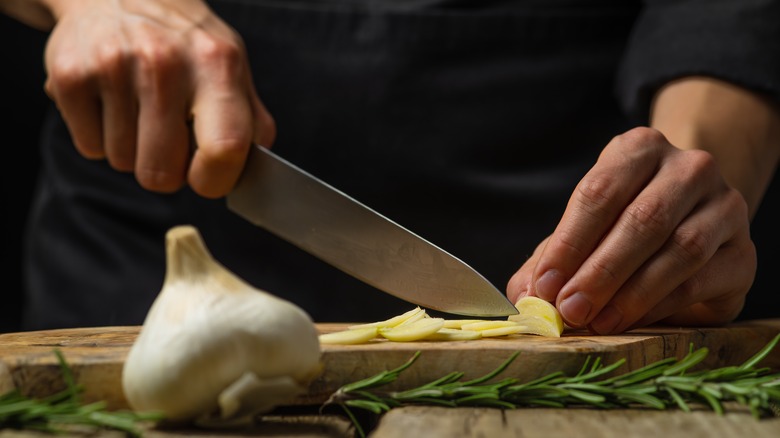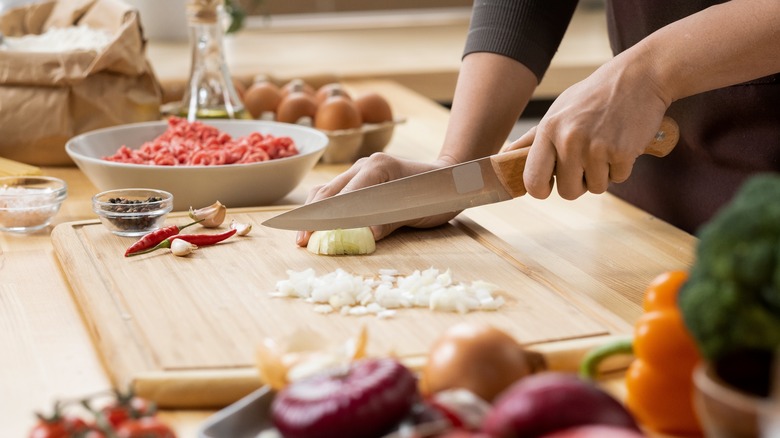How Veggies Can Help Test The Sharpness Of Your Knives
Chef safety is the number one goal in any kitchen. It might seem counterintuitive, but a sharp knife is actually safer to work with than a dull one. According to Kitchen Perfect, when working with sharp knives, less pressure is needed for effective cutting. Not only does this reduce the chances of an accidental injury, but it also keeps your knife in good shape, since you're consistently applying less force to the blade. Plus, dull knives can damage your ingredients. (Ever hack apart a bundle of herbs because your knife is too dull? You might know what we're talking about here.) Dull blades are also "more likely to slip" than sharper, more precise knives that offer the handler more control.
To sharpen your knife, the American Knife and Tool Institute recommends employing a specifically-designed knife-sharpening tool like a whetstone. But, to maintain their sharpness regularly, it suggests avoiding the dishwasher, keeping them dry, and storing them in a dedicated knife block. However, before you can renew or preserve your knives' sharpness, it's important to know: Is it time to sharpen your knife? Luckily, there's an easy way to assess this, and you probably already have all the tools you need lying around the kitchen. Here's how veggies can help test the sharpness of your knives.
All you need is an onion and maybe a tomato
Grab an onion. If your knife slices through it like a breeze, the knife is sharp enough, per America's Test Kitchen. But, if there's any resistance, your cuts are jagged, or you need to use a little extra force to get the knife through the onion – time to whip out the old reliable knife sharpener. The outlet says a dull blade shouldn't be too hard to spot even if the person using the onion test is a novice in the kitchen. Plus, if you're working with a particularly dull blade, you'll even be able to hear it crunching through the onion as you cut instead of making a clean slice.
Work Sharp Tools recommends a similar process, but this time using a tomato. To do it, gently rest your knife along the outside of the tomato. If when applying minimal pressure, your knife cuts through the tomato's skin with ease, it's ready to rock 'n roll into your next recipe. But, if it causes the skin to pull or doesn't immediately penetrate it, give the blade a tune-up before its next use.

